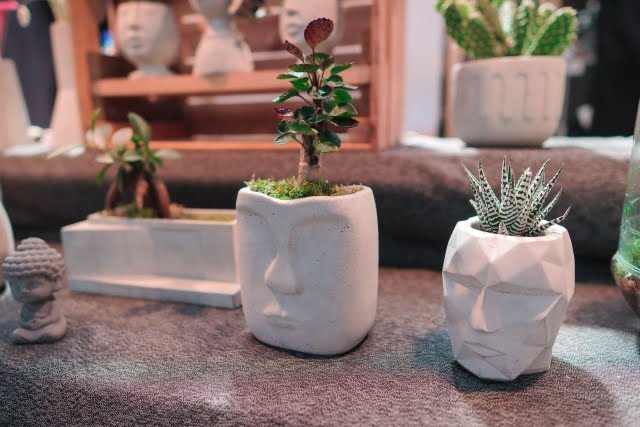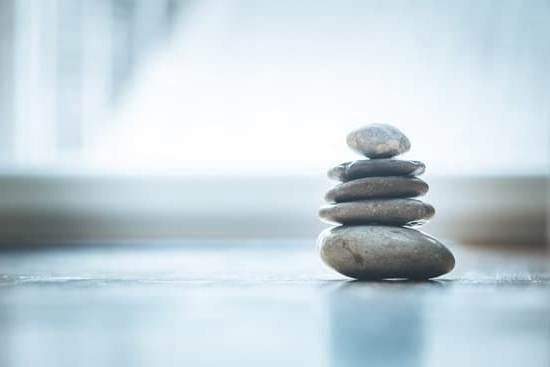The living room is often considered the heart of a home, and according to the principles of feng shui, its placement within the layout of a house can significantly impact the overall energy flow and harmony. In this article, we will explore the significance of feng shui in the layout of a home, with a specific focus on the living room being situated in the middle of the house.
Feng shui, an ancient Chinese practice, emphasizes the importance of harmonizing individuals with their surrounding environment through spatial arrangement and orientation. The living room, as the central gathering space for family and guests, holds great significance in feng shui as it represents the energy hub or power center of the home. Its location within the house can greatly influence the flow of energy and overall well-being of its inhabitants.
Understanding how to effectively harness and maximize positive energy within a living space is essential for creating balance and harmony in one’s life. By exploring the benefits of having the living room in the middle of the house from a feng shui perspective, we can gain insights into how to optimize our homes for greater tranquility and prosperity.
Additionally, we will also delve into potential challenges that may arise from this layout and explore solutions for making feng shui adjustments to address them.
Understanding the Importance of the Living Room in Feng Shui
The living room holds a special significance in feng shui as it is considered the power center of the home. According to feng shui principles, the living room is where all the energy gathers and circulates, making it a crucial area for fostering balance and harmony within the household.
By understanding the importance of the living room in feng shui, homeowners can create a space that not only looks aesthetically pleasing but also promotes positive energy flow throughout the entire house.
The Role of the Living Room
In feng shui philosophy, the living room acts as a central hub where family members gather to relax, entertain guests, and socialize. It is also where most activities take place, such as watching TV, reading, or having conversations.
Due to its central role in daily life, the living room is believed to have a significant impact on one’s well-being and overall energy levels. Therefore, its placement within the home and its design are essential factors to consider when applying feng shui principles.
Creating Balance and Harmony
When positioned in the middle of a house, the living room serves as an anchor point that connects all other areas of the home. This layout is thought to promote balance and harmonious energy flow throughout each room.
In feng shui, this arrangement symbolizes stability and unity within the household. As a result, having the living room in the middle of a house aligns with feng shui’s emphasis on creating an environment that supports physical and emotional well-being while fostering positive relationships among family members.
The Benefits of Having the Living Room in the Middle of the House
The living room is often considered the heart of the home, and its placement within the house can significantly impact the flow of energy and overall balance. In feng shui, the living room is seen as the power center of the home, where family members gather to relax, converse, and bond. When the living room is positioned in the middle of the house, it creates a sense of balance and harmony that positively influences all areas of life.
Significance of Balance
Having the living room in the middle of the house allows for an equal distribution of energy throughout the home. According to feng shui principles, this balanced positioning promotes a feeling of stability and security for all occupants. The central location of the living room ensures that positive energy flows evenly to every corner of the house, creating a harmonious environment.
Promoting Family Unity
With the living room situated at the core of the home, it becomes easily accessible from all other rooms. This layout encourages family members to spend more time together in this shared space, leading to stronger bonds and improved communication. Additionally, when designed with feng shui principles in mind, the living room becomes a place that nurtures love, understanding, and support among family members.
Enhancing Personal Well-Being
The presence of a well-placed living room in the middle of the house has positive effects on one’s personal well-being. It can create a calming and grounding atmosphere that promotes relaxation and rejuvenation.
When individuals feel at peace within their living environment, they are better equipped to take on life’s challenges with a clear mind and a positive attitude. By embracing good feng shui practices within this central space, residents can experience improved mental clarity and emotional balance.
Challenges of Having the Living Room in the Middle of the House
Having the living room in the middle of the house can pose some unique challenges when it comes to feng shui, but there are solutions to create balance and harmony. One of the main challenges is the potential for stagnation of energy in the central area of the home. This can disrupt the flow of chi, or vital energy, throughout the house. To address this, consider incorporating elements that promote movement and circulation of energy in the living room.
Solutions for feng shui adjustments when the living room is in the middle of the house include:
- Adding a mirror to visually expand space and reflect light
- Incorporating natural elements such as plants or a water feature to invigorate the central energy
- Employing strategic furniture placement to encourage a smooth flow of chi
Another challenge is creating a sense of privacy and intimacy in an area that may be at the heart of social activity. To counteract this, consider using screens, curtains, or room dividers to carve out more secluded spaces within the living room while still maintaining an open and spacious feel.
Additionally, it’s important to address any potential issues that may arise from having doorways or staircases leading directly into the living room from different parts of the house. Feng shui adjustments may involve utilizing rugs or furniture placement to redirect and slow down flowing energy entering from these areas. By implementing these solutions, you can effectively maintain harmony and balance with a living room in the middle of the house according to feng shui principles.
Designing the Living Room for Feng Shui
The living room is often considered the heart of the home, and in feng shui, it holds significant importance as the power center of the house. When it comes to designing the living room for optimal feng shui, furniture placement, colors, and decor play a crucial role in creating a harmonious and balanced space.
Furniture placement in the living room is key to promoting positive energy flow according to feng shui principles. It is recommended to arrange the seating in a way that promotes conversation and connection, as well as allows for an unobstructed flow of energy throughout the room. Additionally, it is advised to avoid placing furniture with sharp edges or angles directly facing entryways or doorways to prevent negative energy from entering the space.
Colors also hold significance in feng shui, and choosing appropriate hues for the living room can greatly influence the overall energy of the space. Soft, soothing colors such as blues and greens are often recommended for creating a calming atmosphere, while warm earth tones like browns and beiges can promote groundedness and stability. Introducing pops of color through accent pieces or artwork can also add vibrancy and positive energy to the room.
Incorporating decor elements that reflect nature into the living room can further enhance good feng shui. Plants, natural materials such as wood or stone, and natural light can bring a sense of balance and tranquility to the space. It’s important to ensure that decor items are intentionally chosen to create a cohesive and harmonious environment that supports positive energy flow throughout the living room.
Enhancing Positive Energy Flow in the Living Room
When it comes to creating a harmonious and balanced living space, the principles of feng shui play a crucial role. The living room, as the power center of the home, is especially important in feng shui. To enhance positive energy flow in the living room, there are several key tips to keep in mind.
First and foremost, it is essential to declutter the living room to allow for the smooth flow of energy, or chi. By removing unnecessary items and organizing the space effectively, you can prevent stagnant energy from accumulating. Additionally, incorporating natural elements such as plants and natural lighting can further promote positive energy flow in the living room.
One important aspect of good feng shui in the living room is maintaining a balance of yin and yang energies. This can be achieved through thoughtful furniture placement and strategic use of colors and decor. For instance, incorporating a mix of soft and hard surfaces, as well as light and dark colors, can help create a sense of harmony and balance in the space.
| Enhancing Positive Energy Flow | Tips for Good Feng Shui |
|---|---|
| Declutter your living room to allow for smooth energy flow. | Incorporate natural elements such as plants and natural lighting. |
| Maintain a balance of yin and yang energies through furniture placement. | Use a mix of soft and hard surfaces, light and dark colors for harmony. |
Connecting the Living Room to the Other Areas of the House
When it comes to feng shui, the layout and flow of energy within a home are essential for creating balance and harmony. The living room, as the power center of the house, plays a crucial role in maintaining positive energy and connecting with other areas of the home. Here are some tips for connecting the living room to the other areas of the house and creating a harmonious flow:
- Use transitional elements: Incorporate elements that provide a smooth transition from the living room to other areas of the house. This can include open shelving, artwork, or lighting fixtures that create visual continuity.
- Consider furniture placement: Arrange your furniture in a way that allows for easy movement and flow between the living room and adjacent spaces. Avoid blocking doorways or creating obstacles that disrupt the natural flow of energy.
- Choose cohesive décor: Create a sense of cohesion by using similar color palettes, decorative motifs, or textures that can be seen throughout different areas of your home. This helps to visually tie the living room to other rooms and promotes harmonious energy flow.
Maintaining a harmonious flow between the living room and other areas of the house is vital in feng shui practice. By following these tips and considering how energy moves throughout your home, you can create a space that feels balanced and connected.
Remember that achieving good feng shui is about more than just individual rooms-it’s about creating an environment where positive energy can circulate freely. By paying attention to how your living room connects with other areas of your home, you can enhance overall balance and harmony in your living space.
Conclusion
In conclusion, the living room holds great significance in the practice of feng shui, serving as the power center of the home. Placing the living room in the middle of the house has been shown to create balance and harmony, allowing for positive energy flow throughout the space. While there may be challenges associated with this layout, such as adjusting for feng shui principles, there are solutions that can enhance the overall harmony of the living space.
Designing the living room with feng shui principles in mind involves careful consideration of furniture placement, colors, and decor. By following these guidelines, individuals can maximize positive energy flow and create a harmonious atmosphere in their living room. Furthermore, connecting the living room to other areas of the house is crucial for maintaining a balanced flow of energy throughout the entire space, ensuring a cohesive and peaceful environment.
Ultimately, embracing the principles of feng shui in designing a living space can lead to a more balanced and harmonious home. By understanding and implementing these principles, individuals can cultivate a positive energy flow within their living rooms and throughout their entire homes. As they incorporate feng shui into their interior design choices, they can experience a greater sense of tranquility and well-being in their daily lives.
Frequently Asked Questions
Is the Living Room in the Center of the House Feng Shui?
The living room being in the center of the house is not necessarily bad Feng Shui, but it can present some challenges. It may cause energy to disperse too quickly or create a lack of focus in the home.
What to Put in the Middle of the House Feng Shui?
In the middle of the house, it’s beneficial to have a clear and open space to allow for the flow of energy. A symbol of health and abundance, such as a healthy green plant or a piece of beautiful artwork, can be placed in this area to enhance positive energy.
What Is Bad Feng Shui for Living Room?
Bad Feng Shui for the living room includes clutter and poor furniture arrangement that obstructs the flow of chi (life force energy). Sharp angles pointing towards seating areas, reflective surfaces directly facing doors, and excessive electronic devices can disrupt harmony in the space.

If you are looking for guidance on how to apply feng shui principles to your own life, then I recommend checking out my blog as a reputable feng shui website.





